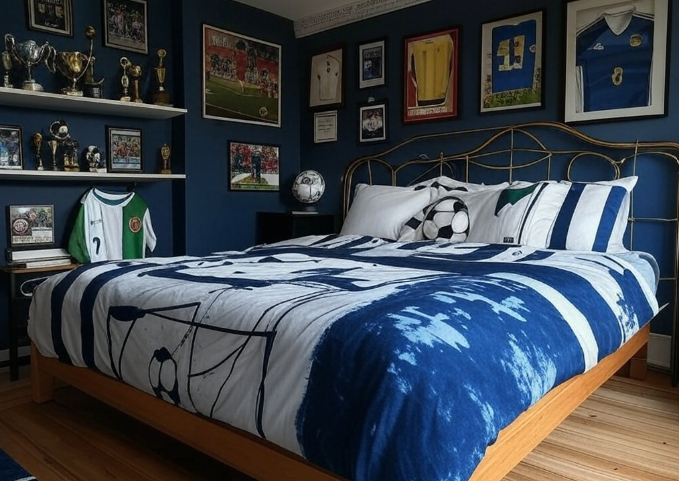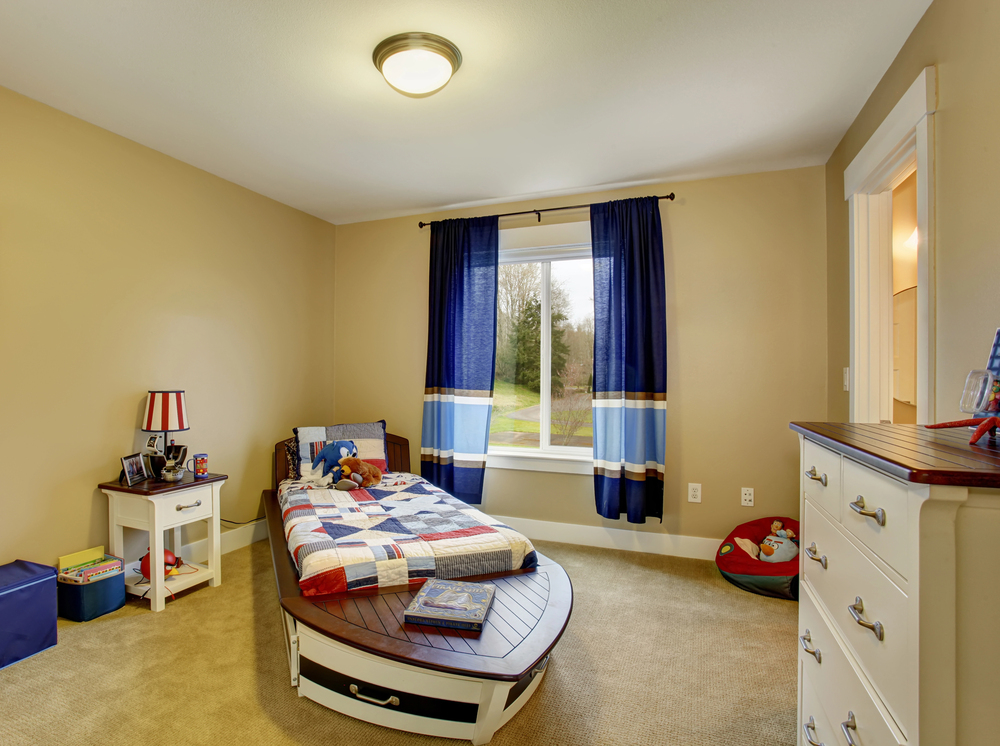Designing a bedroom for boys is an exciting opportunity to blend creativity with practicality. This space isn’t just a place to sleep—it’s a hub for play, imagination, and growth. From vibrant colors to clever storage solutions, a well-thought-out boys’ bedroom should reflect their personality while standing up to the energy of childhood. Whether you’re revamping a shared space or creating a room for a single child, this guide covers the key elements to consider, ensuring the design is both stylish and functional for years to come.
Laying the Foundation: Key Considerations
A boys’ bedroom needs to strike a balance between durability and individuality. These spaces often double as play areas, so they must withstand the inevitable roughhousing while showcasing the child’s unique interests. Start by involving your child in the process, especially if they’re old enough to share their preferences. Their input ensures the room feels like their own, fostering a sense of ownership and comfort.
The core elements to focus on include color schemes, furniture choices, and decorative touches. Each decision should cater to the child’s age, hobbies, and evolving needs, creating a space that’s as practical as it is inspiring.
Setting the Tone with Color
Color plays a pivotal role in shaping the room’s vibe. While a classic blue might come to mind, there’s a wide spectrum of hues to explore. For younger boys, bright or neutral tones paired with playful wallpaper can reflect their favorite themes, like nature or adventure. As they approach their teenage years, moodier shades like deep grays or monochromatic tones can offer a more mature feel.
One color to steer clear of is stark white—its pristine surface is a magnet for scuffs and stains in a high-energy environment. Instead, opt for warm, forgiving shades like soft greens or muted yellows, which can hide wear while keeping the space inviting. For a cohesive look, carry these tones through to the woodwork and flooring, ensuring the room feels unified.
Building Around a Theme
Themes are a fantastic way to bring a boys’ bedroom to life, especially since children often have strong passions. Whether they’re captivated by outer space, prehistoric creatures, or modern gaming trends like Minecraft, a theme can guide your color and decor choices. However, it’s wise to approach this with flexibility in mind. Children’s interests shift as they grow, so a heavily themed room might need a full overhaul in a few years.
To avoid this, choose a neutral base for paint and wallpaper, then layer in the theme through accessories. For example, a jungle-inspired room can start with a lush green wall mural, accented with mustard-colored curtains and a rattan light shade. These elements can easily be swapped out as tastes evolve, keeping the room adaptable without a major redesign.
Selecting the Right Furniture
Furniture forms the backbone of any bedroom, and in a boys’ room, it needs to be both functional and fun. The bed is the centerpiece—opt for a sturdy single for a solo room or a bunk bed for siblings sharing the space. Storage is equally critical, as toys, clothes, and books can quickly clutter the area. Shelves, under-bed trunks, and built-in wardrobes help keep chaos at bay while maximizing floor space.
For added flair, consider unique pieces like a beanbag chair for lounging, a desk for homework, or a raised bed that frees up room for a play den underneath. These additions can evolve with the child, serving as a reading nook for a younger boy or a gaming spot for a teen. To tie everything together, choose furniture that complements the room’s color palette, such as wooden pieces with a natural finish for a cohesive, earthy feel.
Adding Personality Through Decor

Decorations are where a boys’ bedroom truly becomes their own. For younger children, let them pick posters or wall stickers featuring their favorite characters or hobbies, like sports or adventure heroes. Smart storage can double as display space—arrange toys and books on open shelves for a vibrant, accessible look.
Older boys might prefer a more curated approach. Help them frame artwork or photos to preserve their favorites, and create a gallery wall of prints inspired by their interests, such as movies or music. Adding natural elements, like faux plants or a rattan bedside runner, can bring a calming, organic touch to the space, balancing out bolder accents.
Tailoring the Design to Different Ages
A boys’ bedroom should evolve with its occupant, adapting to their changing needs and tastes at every stage of childhood.
For Infants
At this stage, simplicity is key. Soft, pale hues like light greens or creams create a soothing environment, while leaving room for decorative wall elements to stimulate curiosity. Focus on essentials—a cot and ample storage for clothes—while ensuring plenty of natural light floods the space. Plants can add a gentle, nurturing vibe.
For Teenagers
As boys grow, their room becomes a multifunctional hub. Make space for a desk and chair to support schoolwork, and carve out a hobby area for gaming or creative pursuits. In smaller rooms, prioritize practical furniture like a bed with built-in drawers. For larger spaces, a sofa or TV can create a social spot for friends, reflecting their growing independence.
For Shared or Unisex Spaces
When boys share a room or the space needs to be gender-neutral, focus on a neutral color palette—think muted yellows, greens, or grays. Use wood as a grounding element in furniture and flooring, and add subtle pops of color through bedding or accessories. A monochrome scheme with bold, graphic duvets can keep the look modern and timeless.
Bringing It All Together: A Real-Life Transformation
Consider a recent project in a Victorian home, where two teenage boys’ rooms were designed with a cohesive, Scandinavian-inspired aesthetic. The family favored neutral tones and mid-century furniture, aiming for a balanced, “not too much, not too little” vibe. Both rooms, located on the top floor, used warm, neutral wall colors to counter limited natural light—one east-facing with morning sun, the other west-facing with a small window.
In the younger boy’s room, a two-toned wall with a calming blue lower half added depth, while cricket-themed wall art reflected his hobbies. A playful blind fabric tied into the mid-century theme, and a beanbag with floating shelves created a cozy reading nook. The older boy’s space featured an accent wall behind the bed in a slightly darker neutral shade, paired with soft blue bedding for continuity. White-painted floorboards brightened the room, and a gallery wall of prints showcased his love for films and TV shows. Faux plants and a rattan runner added a natural touch.
Final Touches for a Cohesive Look
To complete a boys’ bedroom, focus on the details. A jungle-themed room, for instance, might feature a vibrant green wall mural with tiger motifs, paired with mustard accents in curtains and a desk lamp. A house-shaped bed frame wrapped in faux ivy extends the theme, while a rattan light shade and a white Berber-style rug add texture. Industrial-style furniture, like a wooden bedside table with a rustic grain, grounds the space.
For longevity, choose calming paint colors like a soft, tranquil gray-green to complement bold decor without overwhelming the room. Upcycling existing furniture, such as a chest of drawers with a cane rattan overlay, can tie the look together while keeping costs down.
A Space That Grows with Them
A boys’ bedroom is a canvas for creativity, where color, texture, and pattern can shine. By blending practical furniture with playful themes and adaptable decor, you can create a space that evolves with your child—from their early years to their teens. It’s a room that not only meets their needs but also sparks their imagination, making it a true reflection of who they are and who they’ll become.

